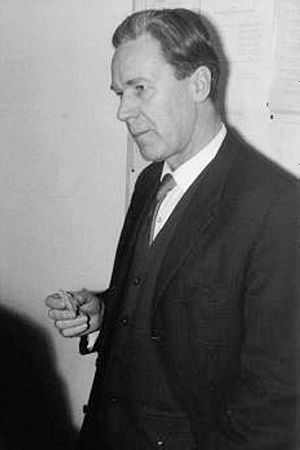Paul Lorenzen facts for kids
Quick facts for kids
Paul Lorenzen
|
|
|---|---|
 |
|
| Born | March 24, 1915 |
| Died | October 1, 1994 (aged 79) |
| Scientific career | |
| Fields | Philosophy, mathematics |
| Doctoral advisor | Helmut Hasse |
| Influences | Aristotle · Kant |
| Influenced | Hoppe |
Paul Lorenzen (born March 24, 1915, died October 1, 1994) was a smart German thinker. He was a philosopher, which means he studied big ideas about life and knowledge. He was also a mathematician, working with numbers and logic. Paul Lorenzen helped start a group called the Erlangen School. He also created something called 'game semantics' with Kuno Lorenz.
Contents
Paul Lorenzen's Life Story
Paul Lorenzen studied at the University of Göttingen in Germany. He earned his PhD degree there in 1938. His main teacher was Helmut Hasse. After that, in 1939, he worked as an assistant at the University of Bonn.
Lorenzen spent a lot of his time studying the basic rules of mathematics. He worked on something called proof theory. He also helped create and change a way of thinking about math called constructive mathematics. This idea focuses on building mathematical objects step-by-step.
Paul Lorenzen also taught in the United States. He taught at Stanford University, the University of Texas, and Boston University. In 1967 and 1968, he gave special talks called the John Locke Lectures.
Paul Lorenzen's Ideas and Theories
In 1962, Lorenzen moved to the University of Erlangen in southern Germany. There, he and Wilhelm Kamlah started the Erlangen School. This school was a new way of thinking about how we gain knowledge.
Lorenzen wrote an important book with Wilhelm Kamlah called Logical Propaedeutic. He also worked with Kuno Lorenz on game semantics, which is a way to understand logic using ideas from games. With another person named Peter Janich, he came up with protophysics. This idea explores the very basic rules of time and space.
Lorenzen also developed different types of logic and analysis. These included constructive logic and constructive analysis. His work on calculus, called Differential and Integral, was inspired by the mathematician Hermann Weyl. Lorenzen found a way to rebuild classical math without using certain complex rules.
He also tried to continue the work of David Hilbert, another famous mathematician. Lorenzen wanted to find new ways to solve problems in math after some difficult discoveries by Kurt Gödel.
In his ideas about geometry and physics, Lorenzen was influenced by Hugo Dingler. He believed that we should build our understanding of geometry and physics from simple, basic actions. Lorenzen also thought that Maxwell's equations, which describe electricity and magnetism, might need changes because of Albert Einstein's theory of general relativity.
Lorenzen was also inspired by Wilhelm Dilthey, a philosopher who studied how people understand the world. Lorenzen often quoted Dilthey's idea that our knowledge comes from our real-life experiences. This means that math and science are built from what we see and do every day.
As a John Locke Lecturer, Lorenzen also created a type of logic called normative logic. This was a way to think about ethics (what is right and wrong) and how we argue about politics.
Important Books by Paul Lorenzen
- Paul Lorenzen, Formal Logic, published in 1964.
- Paul Lorenzen, Normative Logic and Ethics, published in 1969.
- Paul Lorenzen, Differential and Integral: A constructive introduction to classical analysis, published in 1971.
- Paul Lorenzen, Lehrbuch der konstruktiven Wissenschaftstheorie, published in 1984.
- Paul Lorenzen, Constructive Philosophy, published in 1987.
See also
 In Spanish: Paul Lorenzen para niños
In Spanish: Paul Lorenzen para niños

